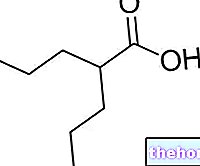TRIENE ® is a Polyenacidin-based drug.
THERAPEUTIC GROUP: Emollient and protective

Indications TRIENE ® Polyenacidin
TRIENE ® is indicated in the protection and treatment of dermatological lesions induced by chemical, physical and atmospheric agents.
Mechanism of action TRIENE ® Polyenacidin
TRIENE ® is a drug based on Polyenacidin, a mixture of polyunsaturated fatty acids such as above all linolenic and linoleic acid, which applied to the skin region to be treated is able to form a thin protective lipid film capable of protecting the skin while preserving levels hydration of the same.
Molecular studies have also characterized the biological activity of polyunsaturated fatty acids used topically, demonstrating their ability to promote skin regeneration by inducing re-epithelialization through the induction of the biological cycle.
The same lipid film protects the skin from any loss of fluids, often associated with dehydration and lengthening of healing times.
Studies carried out and clinical efficacy
LINOLEIC ACID IN ACNE TREATMENT
Int J Cosmet Sci. 2011 Oct; 33: 467-76. doi: 10.1111 / j.1468-2494.2011.00658.x. Epub 2011 Jun 13.
Topical clindamycin 1% vs. linoleic acid-rich phosphatidylcholine and nicotinamide 4% in the treatment of acne: a multicentre-randomized trial.
Morganti P, Berardesca E, Guarneri B, Guarneri F, Fabrizi G, Palombo P, Palombo M.
Interesting work that demonstrates the efficacy of linoleic acid used topically in normalizing skin lesions present in acne, reducing the inflammatory entity of the same and controlling hyperkeratinization.
TOPICAL POLYUNSATURATED FATTY ACIDS AND VENOUS ULCERS
Rev Enferm. 2008 Apr; 31: 26-32.
[Linoleic acid emulsion on the peri-lesion skin of venal ulcers. Action and cicatrizant effect. Corpus study].
Maicas VT, Rochina IJ.
Study evaluating the efficacy of using an emulsion of polyunsaturated fatty acids via the skin in the treatment of ulcers affecting the lower limbs associated with varicose veins, reaffirming both its preventive and healing efficacy.
POLYUNSATURATED FATTY ACIDS IN OPHTHALMOLOGICAL SOLUTION
Arch Ophthalmol. 2008 Feb; 126: 219-25. doi: 10.1001 / archophthalmol. 2007.61.
Topical omega-3 and omega-6 fatty acids for treatment of dry eye.
Rashid S, Jin Y, Ecoiffier T, Barabino S, Schaumberg DA, Dana MR.
Innovative study that evaluates the possibility of using polyunsaturated fatty acids in ophthalmological solution for the treatment of some eye diseases. This treatment has proved effective in reducing the main markers and signs of inflammation.
Method of use and dosage
TRIENE ®
Cream for topical use of 5 gr of Polyenacidin per 100 gr of product.
Generally it is recommended to apply the correct amount of cream on the area to be treated twice a day, taking care to gently massage the region itself in case of erythema or to lightly compress with sterile gauze in case of deep lesions.
Warnings TRIENE ® Polyenacidin
Given the topical use of TRIENE ® it is advisable to be extremely careful in its use, avoiding its ingestion or contact with mucous membranes.
The use of TRIENE ®, especially if prolonged over time, could cause the appearance of adverse reactions of hypersensitivity such as above all irritation and burning.
In this case it would be advisable to immediately stop taking the product by consulting your doctor and taking into consideration the possibility of suspending the current therapy.
It is recommended to store the product in a cool and dry place, out of the reach of children.
PREGNANCY AND BREASTFEEDING
Although there are no absolute contraindications relating to the use of TRIENE ® during pregnancy and in the subsequent period of breastfeeding, it would be useful to resort to the use of this medicine only in cases of real need and under strict medical supervision.
Interactions
It is recommended to avoid the simultaneous use of other antiseptics or detergents.
Contraindications TRIENE ® Polyenacidin
The use of TRIENE ® is contraindicated in patients hypersensitive to the active substance or to one of its excipients.
Undesirable Effects - Side Effects
The use of TRIENE ® especially when prolonged over time, could determine the appearance of local side effects such as redness, burning and hives.
Note
TRIENE ® is a drug not subject to mandatory medical prescription.
The information on TRIENE ® Polyenacidin published on this page may be out of date or incomplete. For a correct use of this information, see the Disclaimer and useful information page.




























